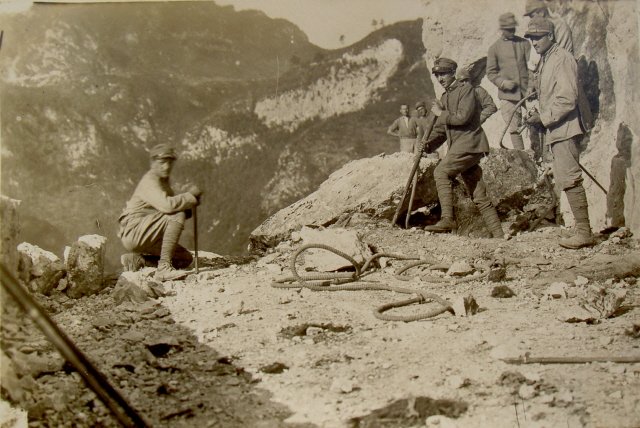The First World War
The extraordinary extent of Vicenza's involvement can be better understood by analyzing some numbers. The figures relating to the Great War provide precisely and unequivocally the terrible and disruptive relationship between the city and what is still today considered the largest mass conflict in history.
Having entered the war with just over 800,000 men, the Italian Army in November 1918 numbered over 5 million soldiers – out of the 7 million males serving in the army – and of these 4 million combatants, approximately 3.3 million took turns defending Vicenza border during the four years of conflict. If we add to these the 130,000 French, 110,000 British, 3,800 Americans, and 12,000 Czechoslovakians who came to the Italian front in the final year of the war, we get the impressive figure of over 3.5 million soldiers who passed through Vicenza during the years of the conflict.
The city of Vicenza was then essentially enclosed within the urban perimeter of the ancient medieval walls. With the hamlets, then called “colture” [farming areas], the population was just over 42,000 (27,000 for the historic center alone).
Vicenza, the headquarters of the First Army, was immediately equipped with a population evacuation plan in the event of a breach of the front lines. In response to Italian offensives that inflicted heavy losses in men and material that could not be replaced, Austria launched the Caporetto offensive against Italy in October-November 1917, with the help of its ally Germany. A combination of favorable circumstances allowed the enemy to exploit their initial success, forcing the Italian army to retreat to the Piave River. Italian losses in men and material were heavy, but the country and the army's determination to hold out along the Piave-Mount Grappa line was decisive. Along this line, the Austrian attempt to invade the plain was shattered in June 1918. In the autumn of the same year, in the great battle of Vittorio Veneto, the Italian Army defeated the enemy, ensuring Italy a complete victory sealed by the Armistice requested by the Austrians and signed on November 3, 1818 at Villa Giusti near Padua.

Reparti del Genio Militare Italiano durante la costruzione della strada in Vallarsa, settembre 1915

Fante italiano nelle trincee dell'Altopiano di Asiago, 1917

